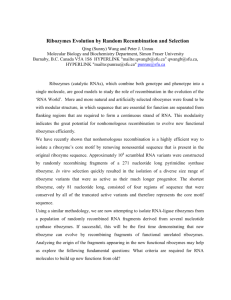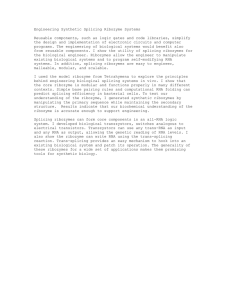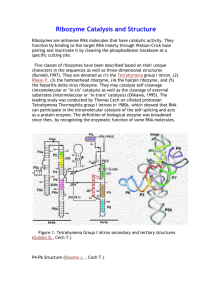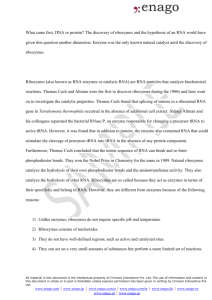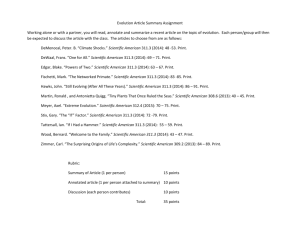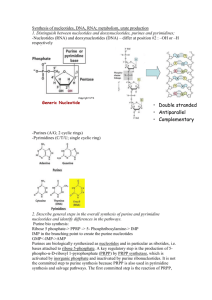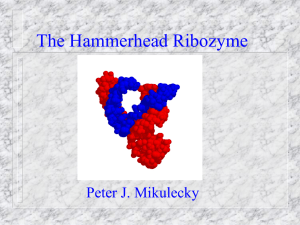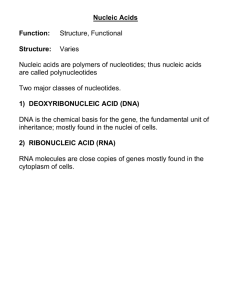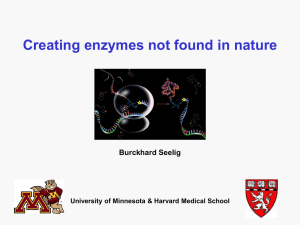To support the hypothesis of an early RNA world, it is crucial to
advertisement
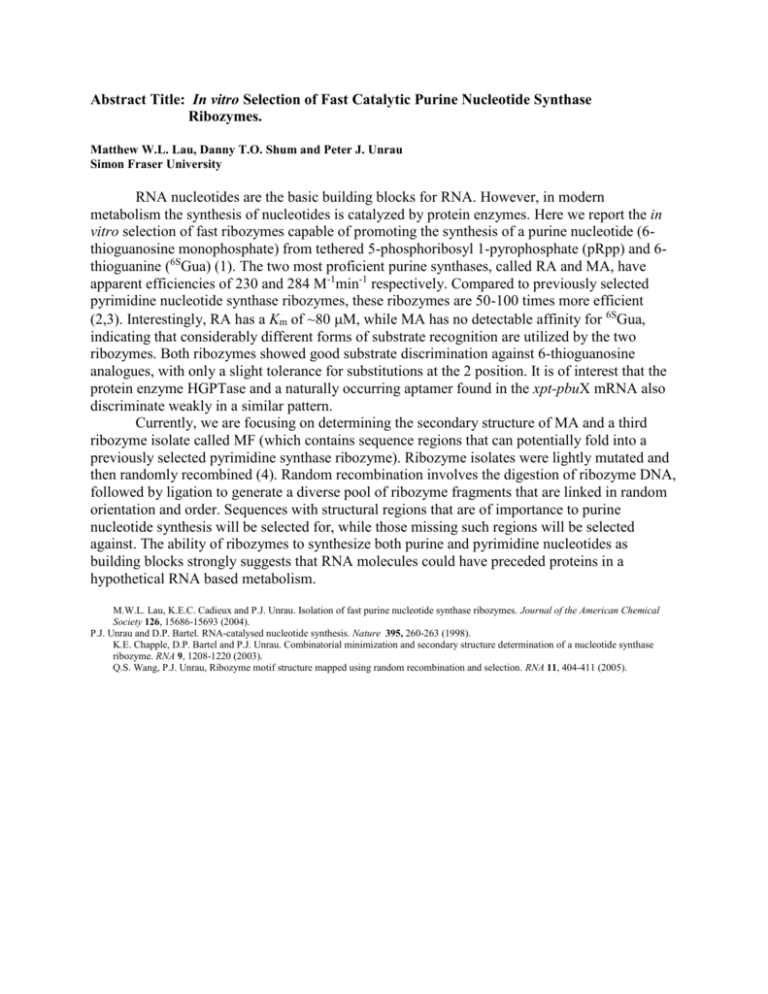
Abstract Title: In vitro Selection of Fast Catalytic Purine Nucleotide Synthase Ribozymes. Matthew W.L. Lau, Danny T.O. Shum and Peter J. Unrau Simon Fraser University RNA nucleotides are the basic building blocks for RNA. However, in modern metabolism the synthesis of nucleotides is catalyzed by protein enzymes. Here we report the in vitro selection of fast ribozymes capable of promoting the synthesis of a purine nucleotide (6thioguanosine monophosphate) from tethered 5-phosphoribosyl 1-pyrophosphate (pRpp) and 6thioguanine (6SGua) (1). The two most proficient purine synthases, called RA and MA, have apparent efficiencies of 230 and 284 M-1min-1 respectively. Compared to previously selected pyrimidine nucleotide synthase ribozymes, these ribozymes are 50-100 times more efficient (2,3). Interestingly, RA has a Km of ~80 M, while MA has no detectable affinity for 6SGua, indicating that considerably different forms of substrate recognition are utilized by the two ribozymes. Both ribozymes showed good substrate discrimination against 6-thioguanosine analogues, with only a slight tolerance for substitutions at the 2 position. It is of interest that the protein enzyme HGPTase and a naturally occurring aptamer found in the xpt-pbuX mRNA also discriminate weakly in a similar pattern. Currently, we are focusing on determining the secondary structure of MA and a third ribozyme isolate called MF (which contains sequence regions that can potentially fold into a previously selected pyrimidine synthase ribozyme). Ribozyme isolates were lightly mutated and then randomly recombined (4). Random recombination involves the digestion of ribozyme DNA, followed by ligation to generate a diverse pool of ribozyme fragments that are linked in random orientation and order. Sequences with structural regions that are of importance to purine nucleotide synthesis will be selected for, while those missing such regions will be selected against. The ability of ribozymes to synthesize both purine and pyrimidine nucleotides as building blocks strongly suggests that RNA molecules could have preceded proteins in a hypothetical RNA based metabolism. M.W.L. Lau, K.E.C. Cadieux and P.J. Unrau. Isolation of fast purine nucleotide synthase ribozymes. Journal of the American Chemical Society 126, 15686-15693 (2004). P.J. Unrau and D.P. Bartel. RNA-catalysed nucleotide synthesis. Nature 395, 260-263 (1998). K.E. Chapple, D.P. Bartel and P.J. Unrau. Combinatorial minimization and secondary structure determination of a nucleotide synthase ribozyme. RNA 9, 1208-1220 (2003). Q.S. Wang, P.J. Unrau, Ribozyme motif structure mapped using random recombination and selection. RNA 11, 404-411 (2005).
